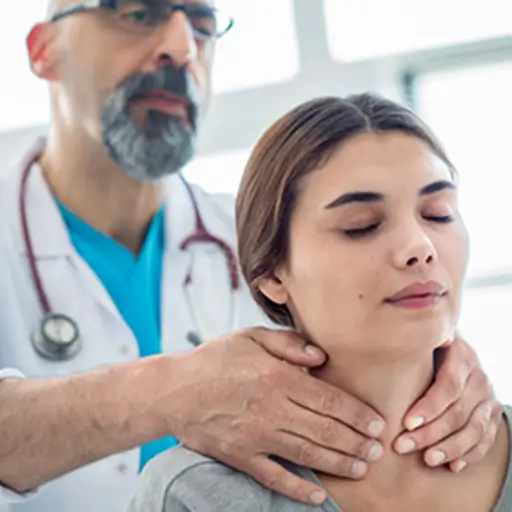Can Tight Socks Make You Break Out in Hives
8 Uncommon Causes of Hives

iStock
Do hives keep making an appearance in your life? If so, you may be curious if food, medication, or an irritant that came in contact with your skin is the culprit. While some cases of hives can be tied to one or more of these three common causes, there may be more uncommon factors behind your hive outbreaks. Things like stress, water, and even tight clothing can trigger eruptions of raised, itchy, red hives (urticaria) on your skin. Check out these eight surprising causes that are easy to overlook.

iStock
Water
Hives from exposure to water, also known as aquagenic urticaria, is a rare condition that typically starts around the time of puberty and most commonly affects women. According to the NIH Genetic and Rare Diseases Information Center, these types of hives begin suddenly when the individual comes in contact with water, regardless of its temperature, and last up to an hour after the water source is removed. Antihistamines and EpiPens have been used with success, although medical literature is limited.

iStock
Tight Clothing
Hives due to tight clothing actually fall under a category of urticaria known as 'pressure urticaria.' Hives of this nature typically appear after someone has been leaning or sitting on a hard surface, or is wearing socks, wristbands, or snug items around the waist/belt line, putting pressure on the skin in that area. With these types of hives, symptoms can occur up to six hours after pressure has been applied to a specific part of the body and painful swelling occurs.

iStock
Cold Temperatures
Winter can be a difficult season to endure in some parts of the world, and even more so for people with cold-induced urticaria. With this form of hives, exposure of skin to cold temperatures, immersion in cold water, or even the ingestion of cold foods can trigger an outbreak. Depending on the severity of the response, symptoms ranging from hives to loss of consciousness and even anaphylaxis can occur. Cold-induced urticaria can be easily diagnosed by your allergist by a simple ice-cube test.

iStock
The Sun
People with solar urticaria typically report itching and stinging sensations followed by an outbreak of hives after being exposed to sunlight or specific wavelengths of UV light. These hives are often mistaken for heat rash, although it is easy to detect the difference. Phototesting can help determine which wavelength of UV light your body is reacting to, and an allergist can prescribe oral antihistamines, lotions, and immunosuppressives to control these types of hives.

iStock
Autoimmune Disease
Research has found a strong association between certain autoimmune diseases and outbreaks of chronic hives. These types of hives are often seen in men and women already diagnosed with lupus, thyroid disease, rheumatoid arthritis, celiac disease, and Type 1 diabetes. Scientists are trying to determine if the autoimmune disease itself is the sole cause of the hives, or if the hives are associated with the immune system having a difficult time recognizing what is friend or foe.

iStock
Sweat or Heat
If you have noticed itchy red hives when you work out, sweat, get nervous, or are exposed to hot temperatures or water, you may have cholinergic urticaria. The culprit behind this type of urticaria is often due to nerve fibers in your sweat glands. As the temperature in your body rises, your skin begins to react to your own sweat and body heat. Cholinergic hives are often seen in people who are already diagnosed with asthma, allergies, eczema, and other types of hives.

iStock
Viruses and infections
Aside from certain autoimmune diseases triggering a hive outbreak, a healthy person experiencing a virus or bacterial infection may also exhibit hives as the illness begins to clear from the body. Rhinitis, bronchitis, infectious mononucleosis, the common cold, and noroviruses (stomach flu) can trigger hives in both children and adults. In most cases, these types of hives clear up within a few hours to a week, and over-the-counter antihistamines can help with itching and burning sensations.

iStock
Stress
An outbreak of hives can be caused by increased levels or prolonged periods of emotional stress. The outbreaks are often associated with a chemical or hormonal change in the body and are most commonly seen in people experiencing demanding situations, such as a death in the family, trauma, injury, accident, divorce, or job loss. People who enjoy thrill-seeking behaviors, such as skydiving or certain sport activities, may experience hives because of chemical changes in their body during these events.

iStock
Other Triggers
While these are just a few uncommon causes of hives, there are many other factors that can be involved in your outbreaks. Other triggers include exercise, vibration, latex, pet dander, friction, or coming into contact with certain plants. Sometimes, hives are idiopathic in nature, meaning there is no known cause. Keeping a daily food, medicine, and activity journal may help you recognize your specific hive triggers. Work with an allergist to help you maintain an active life despite hives.

Meet Our Writer
Marisa Zeppieri-Caruana
Marisa Zeppieri-Caruana is an author, journalist, former Mrs. New York, and founder of LupusChick.com, a New York-based nonprofit and award-winning website for lupus patients. She is the author of Lupus: Real Life, Real Patients, Real Talk and travels around the U.S. speaking on the topic of autoimmune disease on a regular basis. In her free time, she is an avid baker with a love for food photography and styling. Currently finishing her memoir, Marisa resides in New York with her husband, mom, and rescued terrier, Bogey.
Can Tight Socks Make You Break Out in Hives
Source: https://www.healthcentral.com/slideshow/uncommon-causes-of-hives
0 Response to "Can Tight Socks Make You Break Out in Hives"
Post a Comment